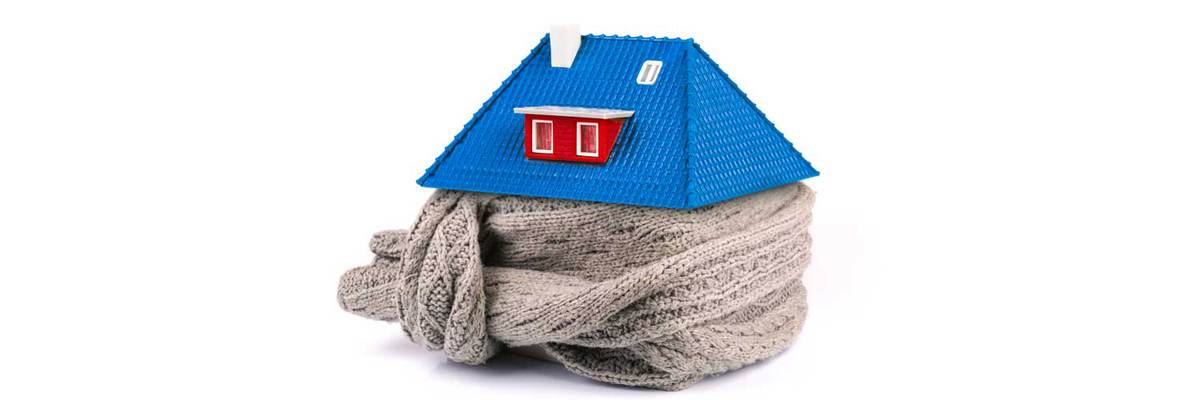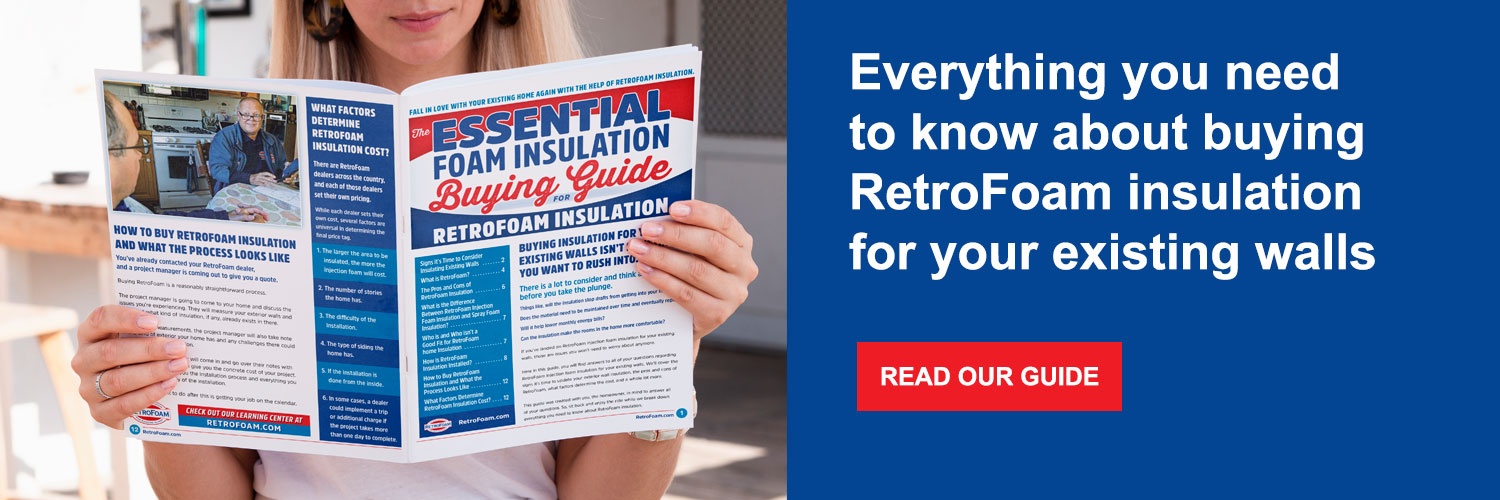What is RetroFoam Injection Foam Insulation R-Value?
injection foam insulation | RetroFoam insulation | FAQs | energy efficiency


While researching home insulation, you’re probably reading a lot about R-Value, and you’d like to know what RetroFoam’s is.
When talking about R-Value, it’s essential to know that it doesn’t really mean the same thing to injection foam or spray foam as it does traditional insulation like fiberglass or cellulose. This is because spray foam and injection foam, like RetroFoam, create an air seal that just isn’t possible with traditional insulation.
Let’s jump into what R-Value is, the R-Value of RetroFoam, and how it compares to other insulation materials.
What is R-Value?
R-Value is a measurement of an insulation’s thermal resistance.
Thermal resistance is the ability to resist heat transfer through conduction. Traditional insulation can prevent conduction, but spray foam and injection foam stops conduction through touch and convection, which happens through air movement.
The air seal created by injection foam and spray foam is why R-Value doesn’t tell the whole story. Essentially the air seal is keeping in the air you pay to heat and cool.
But let’s talk more about foam insulation R-Value.
RetroFoam R-Value
The R-Value of RetroFoam injection foam insulation is R-4.6 per inch.
Unlike fiberglass insulation, RetroFoam’s R-Value will actually go up as it gets colder. Studies have shown fiberglass will actually start to lose its R-Value at 32 degrees, while at 30 degrees, foam insulation’s R-Value will go up to R-5.
Another thing about RetroFoam insulation’s R-Value is that it is not going to diminish over time. Traditional insulation is known to sag, settle, and shift over time, which means you’re not going to maintain the R-Value you had when you started out.
RetroFoam insulation never needs to be updated or replaced, and it lasts for the lifetime of the home.
Foam Insulation R-Value Comparison
How does RetroFoam insulation compare to other insulation materials? Let’s take a look at their R-Value per inch.
- Closed Cell Spray Foam: R-6 to R-7
- RetroFoam Injection Foam: R-4.6 to R-5
- Foam Board: R-4.5 to R-5
- Open Cell Spray Foam: R3.6 to R-3.9
- Cellulose (Loose-Fill): R-3.1 to R-3.8
- Fiberglass (Batts): R-2.9 to R-3.8
- Fiberglass (Loose-Fill): R-2.2 to R2.9
When you compare insulation, the air seal created by spray foam and injection foam is a real game-changer.
That’s because fiberglass and cellulose can’t stop air movement into and out of your home. Even foam board could still allow for some air leakage.
Let’s dive deeper into the air seal foam insulation creates and how that is a game-changer.
It comes down to the way heat travels.
Heat travels much faster through convection or air movement than by conduction. This is where that air seal comes into play.
Fiberglass and cellulose both still allow air to move through them, while foam insulation stops it.
This is why it’s almost more important to have an air seal than to have conductive resistance because what’s the point of stopping heat transfer if you’re not also controlling air movement.
RetroFoam Home Insulation
RetroFoam insulation and the air seal it creates make it a premium insulation, not necessarily its R-Value.
That air seal keeps air from moving freely through your exterior walls into your home. No more cold walls, uncomfortable rooms, drafts, or high energy bills associated with little to no insulation in your walls.
If you want to learn more about what RetroFoam offers, check out the Learning Center on our website.
Related Articles
How Much Can RetroFoam Insulation Help Me Save on Energy Bills?
What is the Difference Between RetroFoam Injection Foam and Spray Foam Insulation?
About Amanda Emery
Amanda previously has worked as a breaking news and crime reporter, TV news producer, and editor. As a journalist, she has won several awards from The Society of Professional Journalists - Detroit Chapter and the Michigan Press Association. Amanda uses her experience as a journalist to write content that will help educate homeowners on foam insulation benefits. When Amanda isn’t writing, she’s spending time with her husband Chris, daughter Lilith-Maeve, and rescued huskies Danger and Wendigo. She also loves knitting, making art, and cooking.


